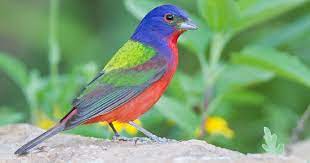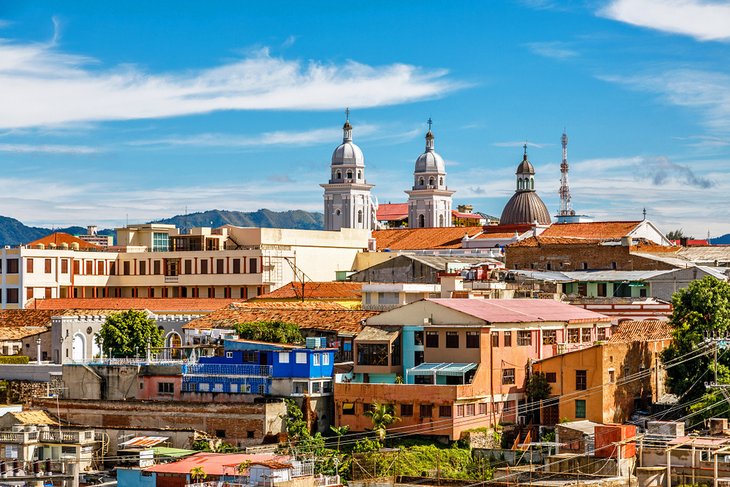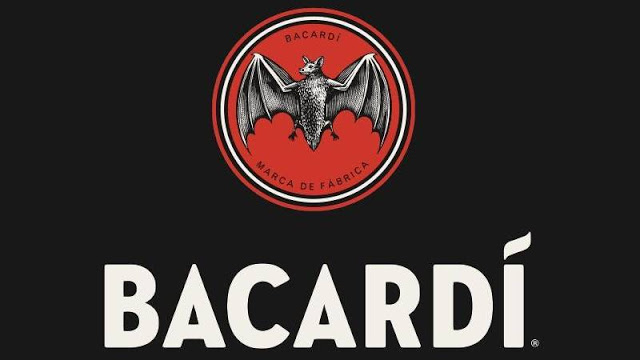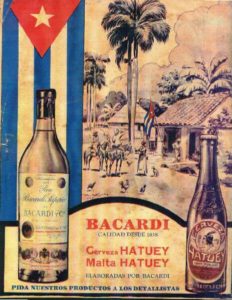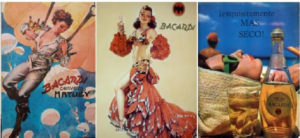
ISSAC DELGADO “EL CHÉVERE DE LA SALSA”, SINGER, COMPOSER, FOUNDER OF THE BAND NG. VIDEOS
Born Isaac Felipe Delgado-Ramirez on April 11, 1962, in Marianao, Habana, Cuba is one of the founders of the band ‘NG La Banda’ and is a popular salsa and timba performer. The singer is popularly known as ‘El Chévere de la Salsa’.
When he was ten years old he entered the Amadeo Roldan Conservatory where he studied violoncello, an instrument that did not interest him. At twelve he left the conservatory and pursued the study of sports and football. He later graduated in sports education. At 18, Isaac joined the group “Proyecto” at the request of the pianist, Gonzalo Rubalcaba. This sparked his innate love for music. It was at this point that he decided to study vocal technique with one of the best vocal instructors in Cuba, Mariana De Gonish. He also enrolled in the school for professional musicians, “Ignacio Cervantes”.
ARTISTIC CAREER
Issac Delgado began his professional career in 1983 when he joined Orquesta de Pacho Alonso. He traveled internationally with the orchestra and recorded a CD with them, his first commercial recording. In 1987 he became the vocalist for Galaxia, who also recorded a CD.
https://youtu.be/FGaL34_uLRg
ISSAC DELGADO SINGS “EN PRIMERA PAGINA” (VIDEOS
In 1988, Delgado became the lead vocalist for the group NG La Banda. It was with this group that he found fame. NG was the band that launched the timba revolution, the first new popular Cuban music genre in decades. As NG’s lead vocalist, Delgado was at the cutting edge of Cuban dance music. His singing talents soon brought him to superstar status within the fast-growing timba field. Delgado became one of timba’s best composers and a uniquely creative melodic improviser. In concert, he often improvises words and melodies for periods of several minutes. He recorded three CDs with NG and was awarded the EGREM prize for 1990–1991.
In 1991 Delgado put together his own band and recorded the CD, ‘Dando La Hora’ under the artistic direction of Gonzalo Rubalcaba. This album received the 1992 EGREM Prize. His second CD, Con Ganas, again with Rubalcaba, received two EGREM prizes in 1993.
Perhaps inspired by his work with Rubalcaba and the virtuosos of NG La Banda, Delgado has tended to stock his band with the most sophisticated jazz musicians available and to give them an exceptional amount of creative freedom. The result has been a long string of unique and fascinating groups.
In 1994 he received another EGREM award for his CD ‘El chevere de la salsa’ y ‘el caballero del son’. His next album was ‘El Año Que Viene”. He later traveled to the United States to perform in the Festival of Salsa in New York’s Madison Square Garden with Celia Cruz, José Alberto “El Canario”, and Grupo Niche. In New York, he recorded another album, Otra Ideal. In 1997 he performed at the festival, Guerra de la Salsa with La India, Rey Ruiz, and Tony Vega.
https://youtu.be/Rvs7OYpOKYw
ISSAC DELGADO SINGS (VIDEOS)
At this point in his career, Delgado was recording with both New York salsa musicians and Cuban timba musicians. Some of his recorded material sounds like salsa, but with distinctive timba elements periodically emerging to the surface. While some timba fans may have been disappointed hearing Delgado in a tamer and more polished salsa sound, the singer continued to record songs with leading timba musicians. Consequently, much of his post-NG material contains some of the most innovative instrumental accompaniment within the context of Cuban-style dance music.
The overall sound of Delgado’s recordings from this period sounds far more like salsa than timba, However, little details in the arrangements reveal the handiwork of some of Cuba’s most important innovators. Delgado’s 1994 hit “La Sandunguita” (composed by his bassist Alain Pérez) took unprecedented liberties with clave, which are considered “sacrilegious” to old school musicians (Peñalosa 2012: 246). While such innovations further aggravated the salsa—timba clave schism, there is no disagreement that “La sandunguita” swings.
Delgado’s most famous group (1996‐1998) was with Alain Pérez on bass and Iván “Melón” Lewis on piano. Of particular note was the band’s ability to spontaneously change the arrangement during performances. They were able to produce changes spontaneously by using flexible rhythm section schemes allowing them to alter the form of an arrangement to fit the flow of each performance (Moore 2012: 91). When the entire rhythm section of this band moved to Spain, Delgado added Antonio “Pachá” Portuondo on timbales and Denis “Papacho” Savón on congas. He then convinced drummer Yoel Páez, bassist Joel Domínguez, and pianist Yaniel “El Majá” Matos to leave Paulito FG’s band to join him.
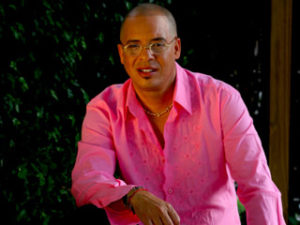
The following piano guajeo (or piano tumbao), created by Lewis is from “No me mires a Los Ojos.” It is a prime example of one of the most critical timba piano innovations—the idea that the piano tumbao is a “hook” by which the song can be identified and that contributes greatly to the song’s popularity. There are three places where the left hand adds an extra note between two right-hand notes, a technique never used before in timba, which has become a major timba piano innovation. Melón was the first to use it as a central part of his style (Moore 2010 pt. 6.). Listen: “No Me Mires a Los Ojos” by Issac Delgado.
He took refuge in the United States with his family and percussionist Dennis Savón “Papacho” on November 23, 2006, although it was initially published in the press in January 2007. In May 2007 he released ‘En Primera Plana’. He followed up with an album entitled, ‘Así Soy’ in October 2008. In 2011, Delgado released a maxi-single with La India in four different versions titled, “Que No Se Te Olvide.”
Issac’s latest recording is “Lluvia y Fuego” (2019/Egrem) and features new original classics as well as tributes to Benny Moré and Cheo Feliciano.
He has lived in Tampa, Miami, Puerto Rico, New York, and Los Angeles. He traveled regularly to Cuba as he responded in a recent interview “I don’t believe in the word repatriation. The homeland is mine here, in China, the United States or wherever it is. I did not repatriate because I have never stopped being Cuban”.
Spouse: Massiel Valdes
Children: Alessia Delgado, Dalina Delgado.
(READ ISSAC DELGADO DISCOGRAPHY IN THE SPANISH SECTION)

* RECOMIENDENOS A SUS AMISTADES * PREFIERA A NUESTROS SPONSORS.*


ISSAC DELGADO “EL CHÉVERE DE LA SALSA”, CANTANTE, COMPOSITOR, UNO DE LOS FUNDADORES DE LA BANDA NG. VIDEOS
Nacido Isaac Felipe Delgado-Ramirez el 11 de abril de 1962, en Marianao, Habana, Cuba es uno de los fundadores de la banda ‘NG La Banda’ y es un popular intérprete de salsa y timba. El cantante es conocido popularmente como ‘El Chévere de la Salsa’.
A los diez años ingresó en el Conservatorio Amadeo Roldan donde estudió violonchelo, instrumento que no le interesaba. A los doce años dejó el conservatorio y se dedicó a los estudios de deportes y fútbol. Posteriormente se graduó en educación deportiva. A los 18 años, Isaac se incorporó al grupo “Proyecto” a petición del pianista Gonzalo Rubalcaba. Esto despertó su amor innato por la música. Fue en este punto que decidió estudiar técnica vocal con una de las mejores instructoras vocales de Cuba, Mariana De Gonish. También se matriculó en la escuela de músicos profesionales “Ignacio Cervantes”.
CARRERA ARTÍSTICA
Issac Delgado inició su carrera profesional en 1983 cuando se incorporó a la Orquesta de Pacho Alonso. Viajó internacionalmente con la orquesta y grabó un CD con ellos, su primera grabación comercial. En 1987 se convirtió en el vocalista de Galaxia, quien también grabó un CD.
En 1988, Delgado se convirtió en el vocalista principal del grupo NG La Banda. Fue con este grupo que encontró la fama. NG fue la banda que lanzó la revolución de la timba, el primer nuevo género de música popular cubana en décadas. Como vocalista principal de NG, Delgado estaba a la vanguardia de la música bailable cubana. Su talento para el canto pronto lo llevó al estatus de superestrella dentro del campo de la timba de rápido crecimiento. Delgado se convirtió en uno de los mejores compositores de timba y un improvisador melódico excepcionalmente creativo. En concierto, a menudo improvisa palabras y melodías durante períodos de varios minutos. Grabó tres CD con NG y fue galardonado con el premio EGREM de 1990-1991.
https://youtu.be/9sPCDqNSqlQ
ISSAC DELGADO CANTA “CENTIMETRO A CENTIMETRO” (VIDEOS)
En 1991 Delgado formó su propia banda y grabó el CD ‘Dando La Hora’ bajo la dirección artística de Gonzalo Rubalcaba. Este álbum recibió el premio EGREM de 1992. Su segundo CD, Con Ganas, de nuevo con Rubalcaba, recibió dos premios EGREM en 1993.
Quizás inspirado por su trabajo con Rubalcaba y los virtuosos de NG La Banda, Delgado ha tendido a abastecer a su banda con los músicos de jazz más sofisticados disponibles y a darles una cantidad excepcional de libertad creativa. El resultado ha sido una larga serie de grupos únicos y fascinantes.
En 1994 recibió otro premio EGREM por su CD ‘El chevere de la salsa’ y ‘el caballero del son’. Su siguiente disco fue ‘El Año Que Viene’. Posteriormente viajó a Estados Unidos para presentarse en el Festival de Salsa en el Madison Square Garden de Nueva York con Celia Cruz, José Alberto “El Canario” y Grupo Niche. En Nueva York grabó otro disco, Otra Ideal. En 1997 actuó en el festival Guerra de la Salsa con La India, Rey Ruiz y Tony Vega.
En este punto de su carrera, Delgado estaba grabando tanto con músicos de salsa de Nueva York como con músicos de timba cubanos. Parte de su material grabado suena a salsa, pero con elementos distintivos de timba que emergen periódicamente a la superficie. Si bien algunos fanáticos de la timba pueden haberse decepcionado al escuchar a Delgado con un sonido de salsa más suave y pulido, el cantante continuó grabando canciones con los principales músicos de timba. En consecuencia, gran parte de su material posterior a NG contiene algunos de los acompañamientos instrumentales más innovadores dentro del contexto de la música de baile al estilo cubano.
El sonido general de las grabaciones de Delgado de este período suena mucho más a salsa que a timba. Sin embargo, pequeños detalles en los arreglos revelan la obra de algunos de los innovadores más importantes de Cuba. El éxito de 1994 de Delgado “La Sandunguita” (compuesto por su bajista Alain Pérez) se tomó libertades sin precedentes con la clave, que son consideradas “sacrílegas” para los músicos de la vieja escuela (Peñalosa 2012: 246). Si bien tales innovaciones agravaron aún más el cisma de salsa-timba clave, no hay ningún desacuerdo en que “La sandunguita” se balancea.
https://youtu.be/li5j03lrC6U
ISSAC DELGADO CANTA “NECESITO UNA AMIGA” (VIDEOS)
El grupo más famoso de Delgado (1996-1998) fue con Alain Pérez al bajo e Iván “Melón” Lewis al piano. De particular interés fue la capacidad de la banda para cambiar espontáneamente el arreglo durante las actuaciones. Pudieron producir cambios de forma espontánea mediante el uso de esquemas de secciones de ritmo flexibles que les permitieron alterar la forma de un arreglo para adaptarse al flujo de cada actuación (Moore 2012: 91). Cuando toda la sección rítmica de esta banda se trasladó a España, Delgado incorporó a Antonio “Pachá” Portuondo en los timbales y Denis “Papacho” Savón en las congas. Luego convenció al baterista Yoel Páez, al bajista Joel Domínguez y al pianista Yaniel “El Majá” Matos para que dejaran la banda de Paulito FG para unirse a él.
El siguiente piano guajeo (o piano tumbao), creado por Lewis, es de “No me mires a Los Ojos”. Es un excelente ejemplo de una de las innovaciones más críticas del piano timba: la idea de que el piano tumbao es un “gancho” mediante el cual se puede identificar la canción y que contribuye en gran medida a la popularidad de la canción. Hay tres lugares donde la mano izquierda agrega un ex
El siguiente piano guajeo (o piano tumbao), creado por Lewis, es de “No me mires a Los Ojos”. Es un excelente ejemplo de una de las innovaciones más críticas del piano timba: la idea de que el piano tumbao es un “gancho” mediante el cual se puede identificar la canción y que contribuye en gran medida a la popularidad de la canción. Hay tres lugares donde la mano izquierda agrega una nota extra entre dos notas de la mano derecha, una técnica nunca antes utilizada en la timba, que se ha convertido en una importante innovación del piano timba. Melón fue el primero en utilizarlo como parte central de su estilo (Moore 2010 pt. 6). Escucha: “No Me Mires a Los Ojos” de Issac Delgado.
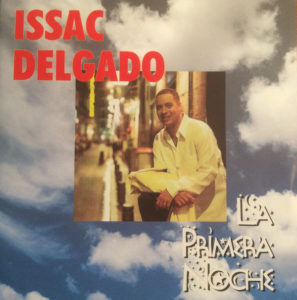
Se refugió en Estados Unidos con su familia y el percusionista Dennis Savón “Papacho” el 23 de noviembre de 2006, aunque inicialmente se publicó en la prensa en enero de 2007. En mayo de 2007 lanzó ‘En Primera Plana’. Siguió con un álbum titulado ‘Así Soy’ en octubre de 2008. En 2011, Delgado lanzó un maxi-single con La India en cuatro versiones diferentes titulado, “Que No Se Te Olvide”.
La última grabación de Issac es “Lluvia y Fuego” (2019 / Egrem) y presenta nuevos clásicos originales, así como homenajes a Benny Moré y Cheo Feliciano.
Ha vivido en Tampa, Miami, Puerto Rico, Nueva York y Los Ángeles. Viajaba regularmente a Cuba como respondió en una entrevista reciente: “No creo en la palabra repatriación. La patria es mía aquí, en China, Estados Unidos o donde sea. No me repatrié porque nunca he dejado de ser Cubano”.
Cónyuge: Massiel Valdes
Hijos: Alessia Delgado, Dalina Delgado.

DISCOGRAFIA
No te compliques (NG La Banda) (1988)
En la calle (NG la Banda) (1989)
No se puede tapar el sol (NG la Banda) (1990)
Dando la hora (1992)
Con ganas (1993)
El chévere de la salsa y el caballero de son (with Adalberto Álvarez) (1994)
El año que viene (1995)
Otra idea (1996)
Exclusivo para cuba (1997)
La primera noche (1998)
La fórmula (2000)
Grandes éxitos
Versos en el cielo (2002)
Prohibido (2004)
En primera plana (2007)
Así soy (2008)
L.O.V.E. (2010)
Supercubano (2011)
Lluvia Y Fuego (2019)
Agencies/ Wiki/ Maria A. Vizcaino/ Extractos/ Excerpts/ Internet Photos/ YouTube/ Arnoldo Varona/ www.TheCubanHistory.com
THE CUBAN HISTORY, HOLLYWOOD.

* RECOMIENDENOS A SUS AMISTADES * PREFIERA A NUESTROS SPONSORS.*





